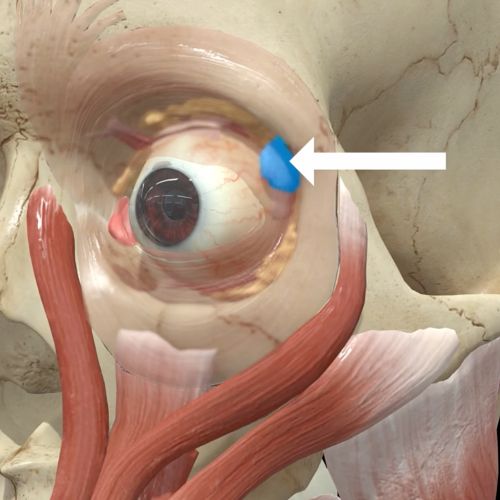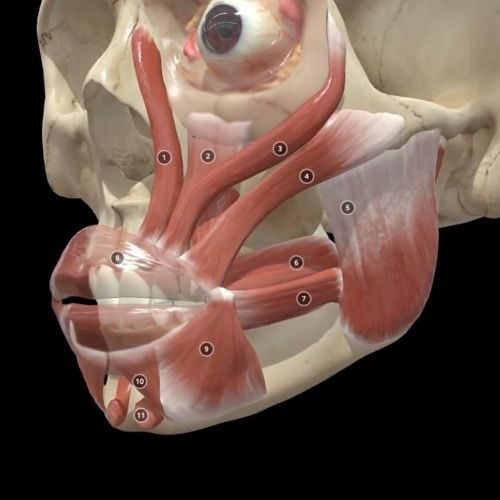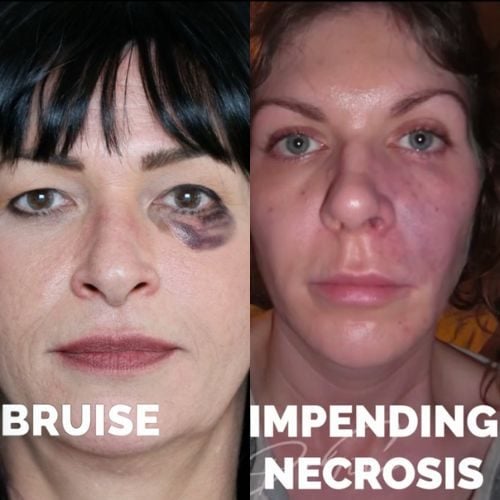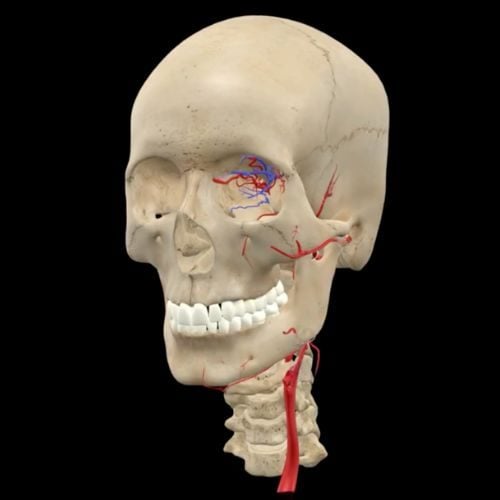- Mail us: support@drtimpearce.com
Baby Botox and preventative botulinum toxin treatments explained
You may be interested
 Dr Tim Pearce
Dr Tim Pearce

‘Baby’ Botox or preventative Botox is rapidly becoming the go-to treatment for younger patients. It is a hot topic on TikTok with over 4.3 million videos dedicated to it, but what is the difference between this so-called ‘baby’ version and regular or normal Botox® (botulinum toxin) treatments?
In this blog, Dr Tim Pearce notes that as aesthetic clinicians, we need to understand what patients mean when they ask for ‘baby’ Botox, and what you mean as a practitioner if you think you are offering this treatment. He also discusses why he believes that ‘baby’ Botox is more about marketing.
Why do younger patients like the concept of ‘baby’ Botox?
Younger patients are often sold the concept of ‘baby’ Botox because it makes them feel better about having botulinum toxin treatment when they are young.
When it comes to understanding human behaviour and buying decisions, we can note that people tend to buy a story and not a product. In the case of ‘baby’ Botox, patients are buying into the story that they are still young and therefore do not require ‘full’ Botox, but they feel comfortable having ‘baby’ Botox as a preventative treatment. Arguably, the result is the same. The dosing may be slightly lower because they are younger, or the same as guided by the manufacturer, but the result is the same because the aim for most of our patients is relaxation with a little bit of movement and to avoid ptosis or problems with communicative cues.
Is ‘baby’ Botox just marketing?
 Dr Tim believes that it is. The term ‘baby’ Botox is used within the aesthetic sector to sell a story that enables patients to feel a little bit more comfortable with having botulinum toxin treatments at a younger age.
Dr Tim believes that it is. The term ‘baby’ Botox is used within the aesthetic sector to sell a story that enables patients to feel a little bit more comfortable with having botulinum toxin treatments at a younger age.
A ‘baby’ Botox treatment sounds like something that is a little less threatening, less invasive, less extreme and has a slightly gentler result compared to normal botulinum toxin treatments; hence, these factors make it much more compatible with people who still feel young and are therefore not seeking anti-ageing treatments. A 28-year-old female who is having botulinum toxin treatments is likely to feel more comfortable telling her friends that it is ‘only baby Botox’.
However, as aesthetic clinicians, we need to understand the difference – in the approach and the result – if there is one, and the expectations of the patient. Certainly, achieving a good result is likely easier because they are younger.
What is preventative Botox?
 One of the reasons that this treatment has become popular is because it is sold as a way of preventing wrinkles – as preventative Botox – a concept that is a bit risky, notes Dr Tim.
One of the reasons that this treatment has become popular is because it is sold as a way of preventing wrinkles – as preventative Botox – a concept that is a bit risky, notes Dr Tim.
The first question we must ask is at what age is it appropriate to start preventing something that is not apparent already? If you follow the logic, you could state that starting on a person’s 18th birthday, we should embark on stopping their facial muscles from moving to avoid them getting older and developing wrinkles. The truth about treatment, when you are young, is that you will lose some muscle volume, meaning that it can make you look older when you have botulinum toxin at a younger age because of the lost volume. This comes back very quickly though so is not a problem, but we cannot argue that every patient who turns 18 is better off having botulinum toxin.
Similarly, experience as an aesthetic clinician tells you that if you wait until a patient begins to get fine lines and wrinkles – and is a more typical age for starting anti-ageing treatments, around 30-35 years old – and then you perform the treatment, you can completely erase the lines within two weeks. You therefore need to ask if it makes sense to be attempting to prevent fine lines and wrinkles, over the course of 12-14 years, when you can swiftly reverse them once they become noticeable to the individual, at an appropriate age. Dr Tim does not see the benefit and regards it as slightly unethical to imply that patients require preventative Botox.
Another element that is fuelling the desire and uptick in requests is quite troublesome. Patients are beginning to perceive normal facial movement as a problem. This can happen with younger people, who do not have lines and wrinkles at rest, but as they start to move their faces to express emotions, particularly negative expressions – worry, concern, anger – they do not want them to show on their faces – furrowed brow, frown lines etc. – even though they are feeling that emotion at the time of expression. This results in a desire to stop all negative expressions.
As a good aesthetic clinician, you must educate your patients that their face is not simply a canvas for looking beautiful but is predominantly a communication device. It can be quite difficult to ‘sell’ patients this concept because most people value beauty more than they value expressing their discontent about something. However, it should be part of the discussion and you may wish to raise examples where some people are required to lay down boundaries in their day-to-day jobs, some professions more so than others – teachers, police, lawyers etc. – and value the ability to create a negative expression to communicate. If you completely remove the ability to do that, the individual is going to have to think of other ways to convey that information and could be at a potential disadvantage. If they are young, with no lines and wrinkles, and you do this, you are simply subtracting normal movement. As aesthetic clinicians, we should not subtract normal communication from patients without full awareness of the implications.
Conversely, it becomes different in an older patient, where certain expressions are set at rest, like a permanent frown line, even when they are not angry. It makes sense to treat these lines because the negative expression is erroneous, and they are miscommunicating all the time.
Of course, there are times when treatment in younger patients can be done for the right reasons, but it really is not any different from a normal botulinum toxin treatment, even if you choose to call it ‘baby’ Botox. Some people are hypermobile and can frown a lot leading to a miscommunication of anger or stress at an early age. This becomes a barrier to communication, even without the wrinkles present at rest, because they make the expression so frequently and others notice. Treating in this instance would be at the heart of medical aesthetics – enabling people to connect with others in a way that is more consistent with how they want to connect with them. By relaxing the muscles, the patient can interact better in normal social and work situations.
What dose should you use for ‘baby’ Botox?
Dr Tim explains that the muscles are effectively the same strength whether you are young or old; they might be slightly weaker as you get older, but there is less fat resisting the movement meaning they might move a bit more. If you are going to stop a muscle moving, then you need approximately the same dose of botulinum toxin.
Therefore, if you halve the dose and describe it to your patient as a tiny dose or ‘baby’ Botox, they might feel better about what they are having done. However, as Dr Tim highlights, it is not a world apart when comparing a 12-unit dose with a 20-unit dose. Being younger, you can give them a slightly lower dose because you do not need as much of the botulinum toxin to achieve a good effect because they have got fat dampening the same movement, so the outcome is the same, just easier to achieve in a younger person because they have the benefit of a youthful appearance already.
Managing patient expectations for ‘baby’ Botox
When addressing a patient who wants ‘baby’ Botox, the first thing is to realise that regardless of what you perceive to be the result, they are asking for something subtle. When a patient mentions a term like ‘baby’ Botox, it is vital to understand they are expressing a desire not to have anything too invasive, they want to look natural afterwards, and they want to avoid looking ‘done’ in any way. As an aesthetic clinician, you must convey the complexities of this (marketing) term and what it really means – especially if it is not always younger patients who are asking for ‘baby’ Botox.
For example, if you propose to perform a ‘light sprinkling’ of botulinum toxin because the patient still wants movement (and does not want to look frozen) but has relatively deep lines and is expecting an amazing result, you must explain what is going to happen. They will still have the movement that they want, and if there is movement then the lines will remain; thus, to remove the lines you must remove the movement, and they will need a higher (more normal) dose of botulinum toxin. The complexity arises with getting the patient to agree that a lesser result (with ‘baby’ Botox) is what they want, and they understand that they will still have lines and wrinkles because dynamic movement is still present.
Dr Tim’s experience with older patients who ask for ‘baby’ Botox is that they tend to request additional treatment at the normal follow-up appointment to achieve the result they really wanted. Their primary concern related to the negative perception that comes with having botulinum toxin treatment. By avoiding the things that they fear, you can increase your chances of making them happy, even if they do not achieve completely flawless results, but a happy medium for them.
For more guidance on botulinum toxin treatments, download Dr Tim Pearce’s 26 essential injection patterns for botulinum toxin.
Dr Tim is always keen to hear about the experiences of his followers. So, if you have any tips for others or questions for him, you can find Dr Tim Pearce on Instagram.
Botox® is a registered trademark of Allergan Aesthetics plc.
Aesthetics Mastery Show
Baby Botox Explained. The Best Injection & Preventative Botox Advice
Dr Tim says:
“‘Baby’ Botox or ‘preventative’ Botox is rapidly becoming the go-to treatment for younger patients. In this episode I discuss the differences between baby Botox and regular Botox, injection techniques and dosages, and share my reasoning behind why I think this treatment term is just a marketing ploy.”
Watch the full Aesthetics Mastery Show here.
The show has had thousands of views and 20+ comments from practitioners and patients. The latest include:
@jimreeves8030
“As an MD co-owner of a med spa and, secondarily, an injector; Yes! Thank you for voicing reason and appropriate treatment without $$ as the driving force for treating patients!”
@virginiavirlova7763
“As a dentist injector, this is a fantastic and necessary video, thanks for saying it!”
@Queenieb03
“I do appreciate this. Im 29 & have been wondering for awhile, should I get Botox ? I notice a lot of women suggest starting around 30 so you don’t have the deep wrinkles in your forehead. But that’s really not why I have considered them. I get told often I have RBF. I do wonder if Botox would help with that or something else”
See comments and feedback on this video on our YouTube channel – feel free to leave a reply and join in the debate.
You can also subscribe to our YouTube channel for really useful regular tips and advice. ![]()
BOTOX (Botulinum Toxin) eLearning Courses
If you want to increase your confidence in botulinum toxin injections, or learn how to avoid and handle complications, Dr Tim Pearce offers two comprehensive courses that are highly rated by our delegates:
Both give CPD and certificates on completion.
In addition, browse our FREE downloadable resources on complications.
Dr Tim Pearce eLearning
Dr Tim Pearce MBChB BSc (Hons) MRCGP founded his eLearning concept in 2016 in order to provide readily accessible BOTOX® and dermal filler online courses for fellow Medical Aesthetics practitioners. His objective was to raise standards within the industry – a principle which remains just as relevant today.
Our exclusive video-led courses are designed to build confidence, knowledge and technique at every stage, working from foundation level to advanced treatments and management of complications.
Thousands of delegates have benefited from the courses and we’re highly rated on Trustpilot. For more information or to discuss which course is right for you, please get in touch with our friendly team.
Related Articles
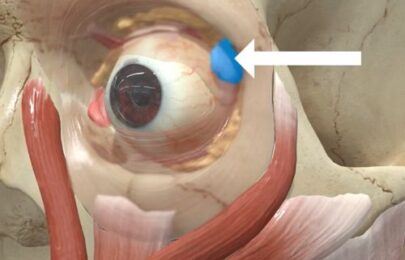 Bestseller
Bestseller
Avoiding Botox Eye Complications From Dry Eye to the ‘Psycho Look’
September 30, 2025
Avoiding Botox Eye Complications From Dry Eye to the ‘Psycho Look’
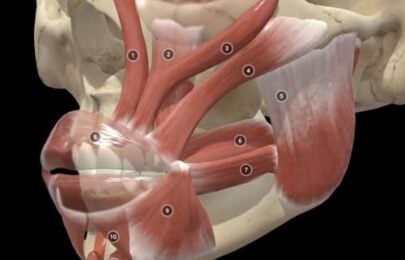 Bestseller
Bestseller
How to Fix a Crooked Smile with Botox
September 25, 2025
How to Fix a Crooked Smile with Botox
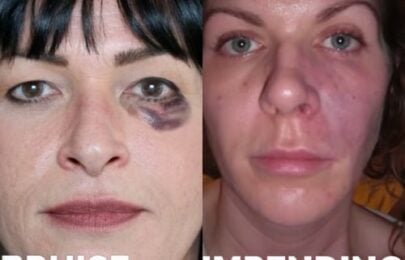 Bestseller
Bestseller
Multiple Causes of Vascular Occlusion and Necrosis
September 23, 2025

